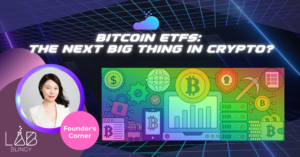Binance Chain, also known as the home of BNB currencies, is increasingly becoming popular in the cryptocurrency world more rapidly than expected. Introduced by Binance in 2020, Binance Smart Chain has ensured the world experiences the quickest and most decentralized trading. Binance Smart Chain (BSC) offers a complete-featured decentralized advance setting developed on new Blockchain technology. Binance Chain also facilitates cross-chain compatibility, ensuring users are profiting from all chains.
This article detailedly explores everything you need to know about BSC, including its pros and cons, how it works, etc. Without any further ado, let’s dive right into it!
First, What Is Binance Smart Chain (BSC)?
Binance Smart Chain is a blockchain that operates similarly to the Binance Chain. But, unlike Binance Chain, Binance Smart Chain enhances smart contract performance and compatibility with the Ethereum Virtual Machine (EVM). The design aim was to keep the high amount of Binance Chain intact while integrating smart contracts into its network.
Binance Smart Chain (BSC) is a blockchain network configured for operating smart contract-based applications. It is an independent blockchain that could function even when Binance Chain goes offline. Since BSC is compatible with EVM, it makes it simple for developers to port their projects over from Ethereum. For users, apps like MetaMask can interact with BSC by just changing a few settings.
Binance Smart Chain Pros
Since its launch in September 2020, BSC has experienced a significant increase in its user base. With several cross-chain connections on the platform, BSC users can quickly transfer their tokens from one system to another. Also, Binance Smart Chain’s 3-second block time ensures quick transactions and validation, making it exceptional.
Aside from the transaction speed and low gas fees, Binance Smart Chain offers other advantages making it a prevalent option amongst Cryptocurrency traders:
- EVM-compatibility
- It’s an independent blockchain that provides security and protection with designated validators.
- Binance Smart Chain network features effectual native double chain communication, augmented for scaling high-functionality dApps.
- Shared with on-chain authority: PoSA (Proof-of-Staked Authority) introduces decentralization and community participants. As the native token, BNB serves as both the gas of smart contract performance and tokens for risk.
- With a 3-second block time, Binance Smart Chain allows high-speed transactions, costing network users a few cents.
- Tested and proven security features.
- Cross-chain compatibility.
Binance Smart Chain Drawbacks
Everything good has at least a downside; Binance Smart Chain is no exception. Below are some of the drawbacks of the BSC network:
- Launched as an EVM-compatible smart chain network, Binance Smart Chain depends on the Ethereum advancement community that acts as a way for every innovation in the network.
- BSC exhibits a centralized nature from its predecessor network Binance.
- Security problems with Ethereum. Binance also faces many cyber-attacks on its platform.
How Binance Smart Chain (BSC) Works
1.Consensus Algorithm
Binance Smart Chain makes block periods after every 3 seconds, thanks to the Proof-of-Stake consensus algorithm, unlike Ethereum, which takes about 13 seconds. It uses Proof of Staked Authority, PoSA, where users stake BNB to become validators. Users who propose a valid block will get transaction fees from the transactions added.
Unlike various procedures, there is no block subsidy of freshly minted BNB because BNB is not inflationary. But on the other hand, the BNB supply reduces over time, as the Binance team often conducts coin burns.
2.Cross-Chain Compatibility
Binance Smart Chain is the interconnected system to the existing Binance Chain. This dual-chain architecture operates on the idea that participants can quickly transfer assets from one blockchain to another.
Apart from the trading speed, this interoperability also exposes participants to an intense setting that can suffice for many use cases.
BEP-2 and BEP-8 tokens from the Binance chain are exchangeable for BEP 20 tokens, a new token system introduced for Binance Smart Chain. The simplest way to move tokens from one chain to another – BEP-2 to BEP-20 or vice versa – is using Binance Chain Wallet, available on browsers like Firefox and Chrome.
3.NFT Design and Support
BSC has a sturdy presence in the Non-Fungible Token market. The NFTs are an element of blockchain classification that has become increasingly popular for their ability to add a rear layer to online assets. The cost of some Non-Fungible Tokens (NFTs) varies from 10s to 100s of thousands of dollars.
4.Staking
One of the first advantages of Build and Build (BNB) – previously Binance Coin – was that token holders could choose to stake or HODL their tokens. The Binance Smart Chain directly maintains wallets used for the cross-chain. Hence, staking is among the most widespread and commonly used Metaverse and DeFi options available in today’s market.
When operators stake their Build and Build (BNB), they will get their returns sooner than usual. And specifically, with Binance Smart Chain’s high-speed, staking Bitcoin and other assets transactions has become simpler. Staking is a primary reason for the rising popularity of the Binance Smart Chain.
Ending Thoughts
Undoubtedly, the Binance Smart Chain blockchain created a lot of buzz in the cryptocurrency world. The Binance Smart Chain centers around the Ethereum Network. Rather than ether (ETH), its integral crypto coin is known as Binance coin (BNB). However, Binance Smart Chain uses most of the same software as Ethereum, but it’s slightly different.
Users can directly link assets from other blockchains to Binance Smart Chain or transfer tokens from Binance exchange accounts to any crypto wallet they choose. Overall, currently, BNB continues to connect Binance and Binance Smart Chain.
Although still in its early stages, the Binance Smart Chain appears promising and is becoming a user-friendly substitute for the primarily Ethereum-based Defi market.
Follow my Twitter @JoyyuanWeb3 to learn about the trends of Blockchain, Crypto, and Web3!








